 Source: Christopher Close / iMore
Source: Christopher Close / iMore
As you may know, I have been on a mission to automate every aspect of my home through Apple's HomeKit ever since its introduction alongside iOS 8. For the most part, the journey has gone pretty well, with a considerable portion of my home — from lighting to window coverings, now living that sweet, smart home life. However, things are certainly not perfect as there are several large gaps in my smart home due to limitations with the platform.
Thankfully, accessories like the Aqara Vibration Sensor are available to help bridge some of HomeKit's gaps. Aqara's ultra-compact sensor adds the ability to pick up things that motion and contact sensors traditionally miss, like vibration, tilt, and drops, with excellent response times and reliability. While it does require some additional hardware to get HomeKit and all the smart things up and running, Aqara's Vibration Sensor is well-worth the cost of admission if you want to bring the smarts to drawers, appliances, and more.
VPN Deals: Lifetime license for $16, monthly plans at $1 & more
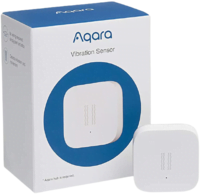
Aqara Vibration Sensor
Bottom line: Aqara's Vibration Sensor opens up a world of unique automation possibilities with the ability to detect tilt, drops, and vibration. Solid reliability, fast response times, and HomeKit integration make it a great addition to any smart home.
The Good
- Fast response time
- Long battery life
- Detects vibration, tilt, and drops
- Works with HomeKit
The Bad
- Requires an Aqara hub
- Indoor use only
- Aqara app is clunky
Compact and customizable
Aqara Vibration Sensor review: What I like

Source: Christopher Close / iMore
Even though I am familiar with Aqara's accessories, I am always amazed by just how small the company's sensors truly are during an unboxing. Aqara's Vibration Sensor measures just under 1.5-inches wide and is around 0.4-inches thick, keeping it from being an eyesore when set on a flat surface or when mounted with the included adhesive tape. The sensor sports just one button that acts to initiate pairing or the reset process and a single LED indicator light giving the whole package a clean overall design that I really like.
Despite highlighting vibration sensing capabilities in the name, Aqara's sensor can also detect tilt and drops. The sensor supports three different sensitivity settings, set via the Aqara app, and has a short cool-down period of one minute. The cool-down time prevents the sensor from continuously sending notifications or running automation for a single event, which should be good for most applications, but it is not customizable.
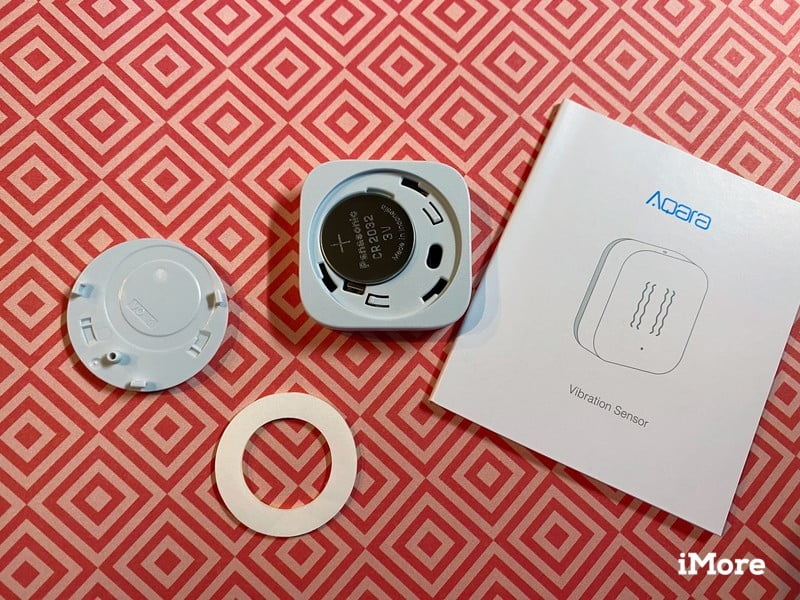
Source: Christopher Close / iMore
The Aqara Vibration Sensor runs on a single CR2032 coin battery and is rated for up to two-years of usage before needing a swap. Extra-long battery life is enabled by the inclusion of a low-power Zigbee radio which relays the sensor's status to an Aqara Hub device (more on that later). Zigbee also allows for a quick and easy setup experience as it doesn't require you to enter in a Wi-Fi password. With the vibration sensor, the entire pairing process consists of holding the on-device button for a few seconds near the hub after selecting the sensor type in the Aqara app.
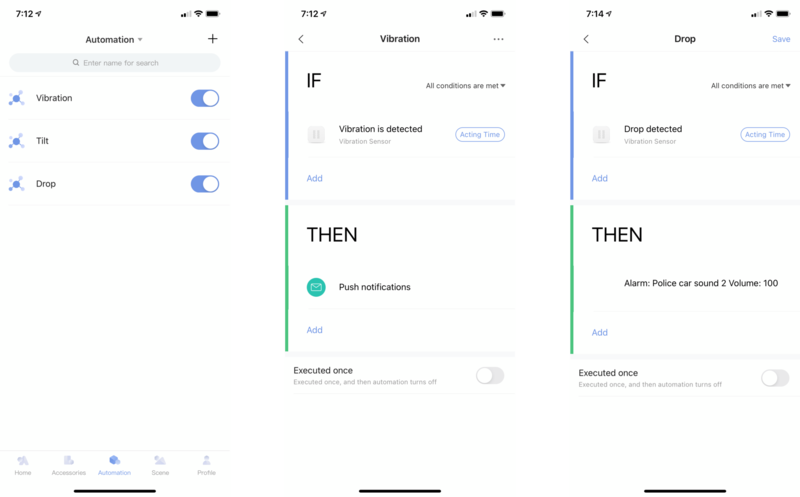
Source: iMore
Through the Aqara app, the vibration sensor can be used as a trigger for other Aqara accessories and features, including things like any on-device lights or alarms found in some of the company's hubs. Creating automation follows a fairly standard if this then that process, where you establish the trigger event followed by the desired outcome. In addition to triggering accessories, Aqara's app allows you to create custom notification messages based on the three motion types and insert delays between firing up scenes or other automation, which I love.
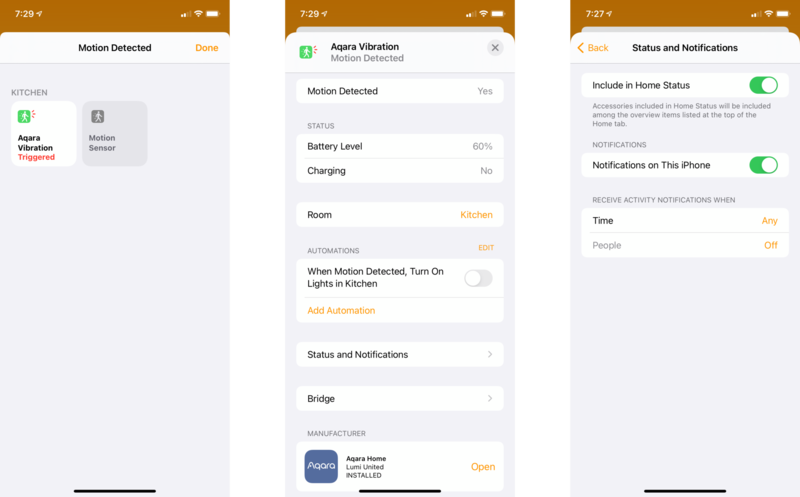
Source: iMore
Of course, one of the biggest selling points of the Aqara Vibration Sensor is HomeKit and Home app support. The sensor is immediately added to HomeKit after pairing it to the hub, making it available for notifications and automation with other accessories. Notifications and automation can deliver or trigger the moment motion starts; however, automation can also include when the motion event stops opening up even more possibilities.
As previously mentioned, the sensor can distinguish between the three motion types through the Aqara app. However, the sensor is only shown as a standard motion sensor in the Home app. This limitation is a little disappointing, but since tilt, drops, and vibrations are all considered motion events, they are all still technically covered, and in my usage, it is not a deal-breaker.
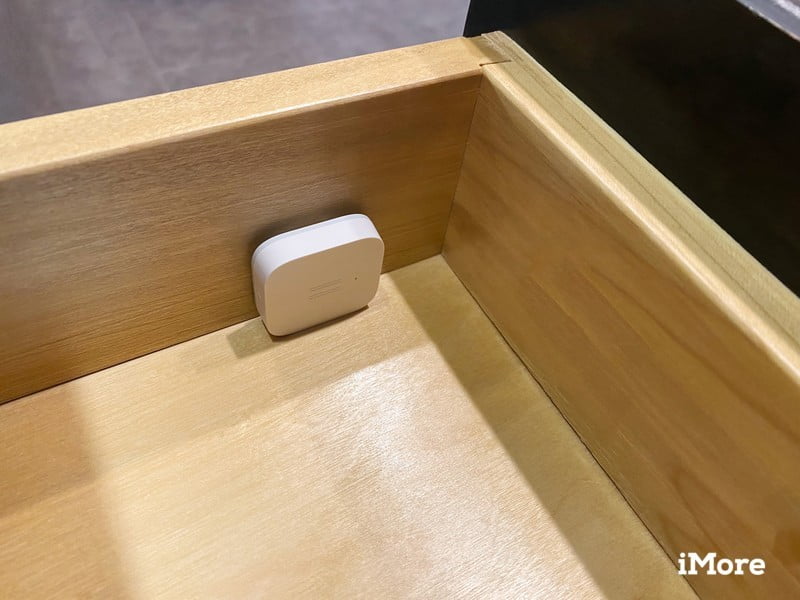
Source: Christopher Close / iMore
Moving over to performance, the Aqara Vibration Sensor has worked exactly as advertised — filling some of the bigger smart home gaps for my household. I set one vibration sensor on our clothes dryer and another in a drawer in the kitchen in my home during testing. For the dryer, I used the sensor and the Home app to turn off the lights in the living room when the drying cycle is complete. This situation worked well by simply setting the sensor on top of the dryer and mounting it to the control panel. On the drawer, I set the sensor both upright alongside a rail and flat inside, and again, it performed admirably in either position.
The aforementioned Zigbee capabilities allow the sensor to trigger automation and deliver notifications pretty much the moment when the motion event triggers. I have yet to come across any instances where notifications took more than a second or two to arrive, and it was pretty magical to see the lights in my living room turn off within a few seconds of the dryer completing a cycle. The sensor's connection to the Aqara app and HomeKit has also been rock-solid, and I have not seen any "No Response" issues or connectivity failures.
Indoor irritations
Aqara Vibration Sensor review: What I don't like

Source: iMore
As much as I really enjoy having multiple Aqara Vibration Sensors installed around the home, I would really like to use them outdoors. Aqara's sensor seems like it would be the perfect solution for monitoring a mailbox — something that I have always wanted to set up for my smart home, but unfortunately, it is not weather-resistant. Sure, the sensor is cheap enough, and with placement inside a mailbox, it should be safe from some of mother nature's elements. However, Aqara also doesn't currently offer any outdoor devices that act as a Zigbee repeater, so the range can be a limiting factor as well.
Speaking of limiting, the vibration sensor requires an Aqara hub to use with HomeKit and general use. Thankfully, Aqara's hub offerings — just like with all of its accessories, are affordable, and they actually bring additional capabilities to the table. The original Aqara Hub, found in the Aqara Smart Home System, acts as a security system, and the Aqara Camera Hub G2H is a full-fledged HomeKit Secure Video camera. They are still an added expense if you want a smart vibration sensor at the end of the day.
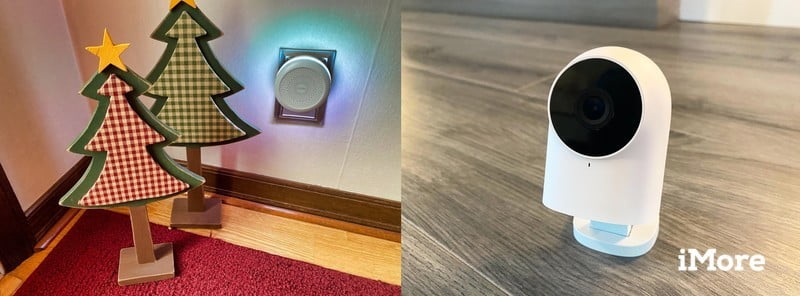
Source: Bryan M Wolfe / Christopher Close / iMore
My biggest issue with the vibration sensor is actually using the Aqara app to perform tasks and adjust settings that are not available through the native iOS Home app. As I noted in my review of the Camera Hub G2H, Aqara's app is clunky and confusing to navigate with what appears to be multiple home screens, each hiding its own set of options. Making matters worse, though, is that the app now suffers from some annoying performance issues.
For instance, tapping on the More Settings option to set sensitivity results in a lengthy pause before it transitions to the next area — upwards of five seconds every time. Also, since the app refreshes content on certain screens, it can cancel out your action altogether once it gets the latest data. It won't give you visual feedback for your selection if you tap on something during this time, either. As you might have guessed, this means that you will come across instances where you sit there waiting for something to happen, and it never does.
Aqara Vibration Sensor review: The competition
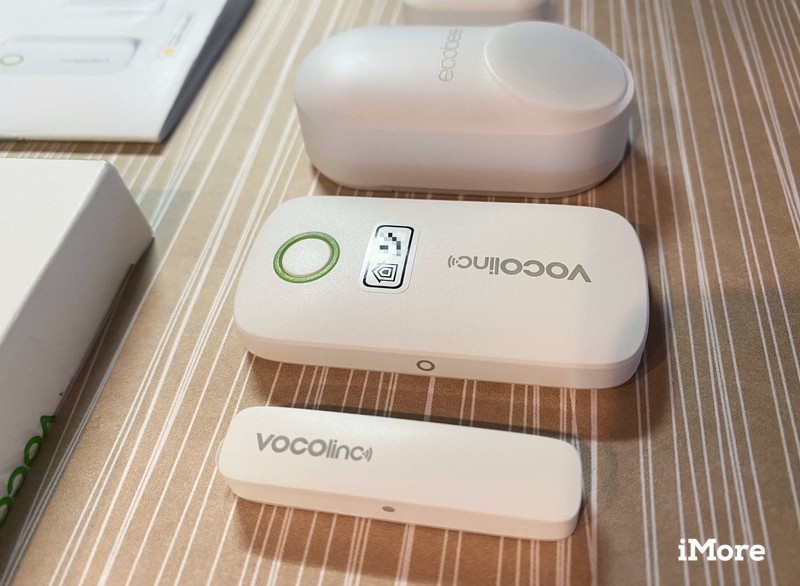
Source: Christopher Close / iMore
At the moment, Aqara's sensor is truly a one-of-a-kind accessory as it is the only HomeKit-enabled vibration sensor that you can buy in North America today. As I previously mentioned, though, the vibration sensor is exposed as just a regular motion sensor in the Home app, so you can get similar results out of devices like contact/door and window sensors, and well, motion sensors.
Instead of monitoring when an item in the home is picked up, the best HomeKit motion sensors, like the Eve Motion Sensor, can monitor an entire area and trigger automation when an event is detected. Eve's Motion Sensor also works both indoors and out, but it is bulkier, more expensive, and slower since it relies on Bluetooth.
The best HomeKit door and window sensors, like the VOCOlinc VS1 Contact Sensor, are the closest match as they attach directly to the surface of the object that you wish to monitor. The VS1 uses a two-piece magnetic system that is not as compact as Aqara's sensor, has shorter battery life, and lacks weather-resistance. The VS1 is around the same price, though, and it doesn't require a hub as it features Bluetooth connectivity.
Aqara Vibration Sensor review: Should you buy
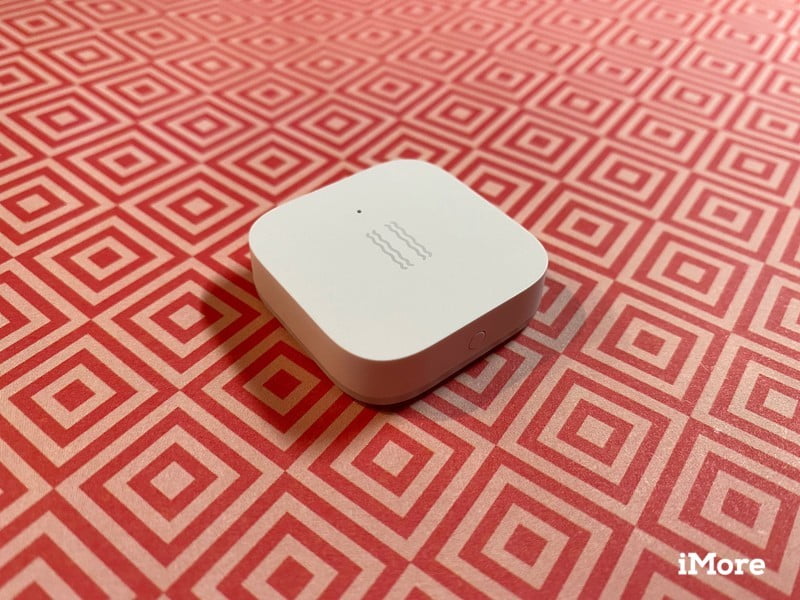
Source: Christopher Close / iMore
You should buy this if ...
You want an affordable vibration sensor
At less than $20 each, the Aqara Vibration Sensor is an affordable way to monitor multiple objects or windows in the home without spending a fortune — if you have an Aqara hub device.
You want something that goes beyond traditional contact and motion sensors
With an insanely small frame and the ability to pick up drops, tilt, and vibrations, Aqara's sensor is an excellent choice for places like drawers and appliances, where traditional motion and contact sensors just won't cut it.
You want a vibration sensor that works with HomeKit automation
The Aqara Vibration Sensor is the only game in town when it comes to compatibility with Apple's HomeKit in North America. If you want a sensor that can pick up vibrations and use them to trigger HomeKit scenes and automation, then you need Aqara's offering.
You should not buy this if ...
You do not have or want an Aqara Hub
Although Zigbee is associated with faster response times and excellent reliability, it requires a dedicated hub to make all the wireless magic happen. If you don't have an Aqara hub and don't plan on picking one up soon, then the vibration sensor is not for you.
You plan to use the vibration sensor outdoors
Aqara's battery-powered Vibration Sensor is dirt cheap, which may make ignoring its lack of weather-resistance tempting, but to maintain safe operation, it is for indoor use only.
You only want to use the sensor through the Home app
To get the most out of the Aqara Vibration Sensor, you will need to use the Aqara app for things like adjusting sensitivity, accessing logs, and setting up event-specific push notifications.
If you are debating whether or not the Aqara Vibration Sensor is a good fit for your home, then you need to consider several factors. Aqara's indoor-only sensor requires a hub, and you will need to step outside of the Home app walls and HomeKit to get the most out of it. However, if you already have or don't mind picking up an Aqara hub, then you can recover the cost over the long-run as Aqara's accessories are some of the cheapest around. Aqara's sensor is also the only HomeKit vibration sensor available in North America, so the decision may actually be easier than you think.
The Aqara Vibration Sensor is an excellent way to bridge some of the HomeKit smart home gaps by going places and detecting things that other sensors simply cannot. Aqara's ultra-compact sensor opens the doors to smart notifications and automation when the dryer is finished or when a drawer is open with fast response times and great reliability. While I am generally not a fan of adding more hubs or using anything more than the Home app for my smart home, the utility of the Aqara Vibration Sensor makes the tradeoffs worth it — especially if you want to automate every last inch of your home.

Aqara Vibration Sensor
Bottom line: The Aqara Vibration Sensor is an excellent way to monitor appliances, drawers, and more, with ultra-fast notifications, reliable Zigbee connectivity, and HomeKit integration.
We may earn a commission for purchases using our links. Learn more.

Apple awaits iOS 14 tracking decision in France
A new report says we can expect a decision tomorrow from French authorities regarding the fairness of privacy changes in iOS 14 that mean users have to opt-in to IDFA tracking. Apple might have to enter talks with firms or even freeze its plans.